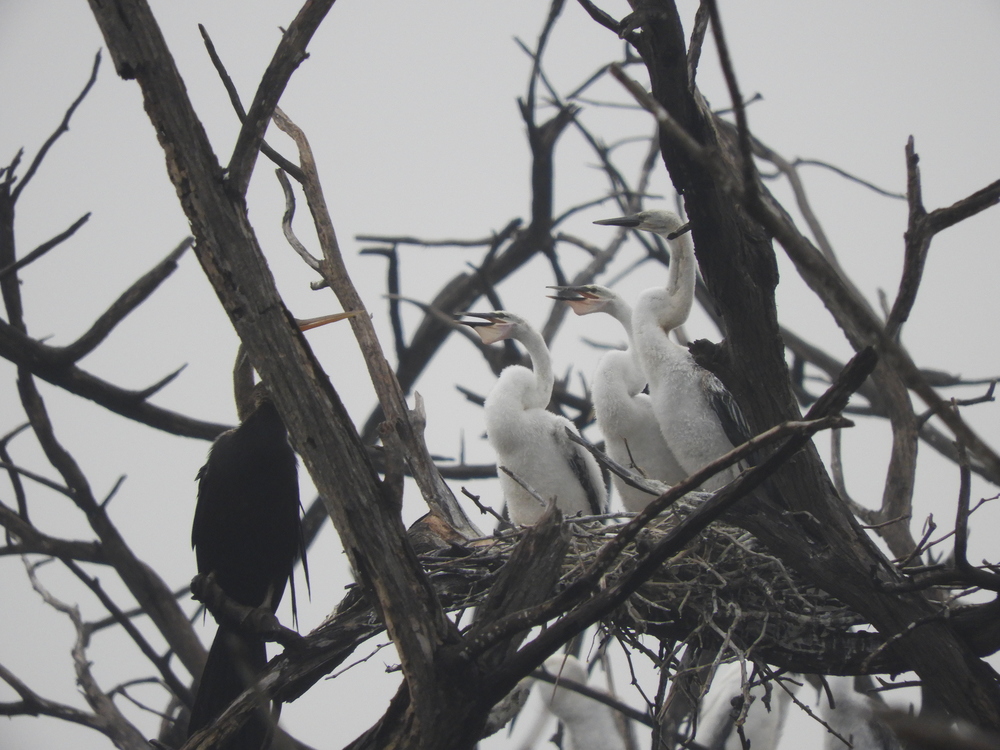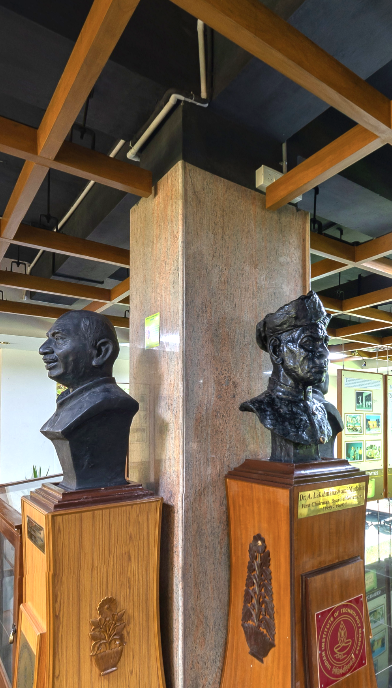
Oriental Darter [Anhinga melanogaster] (nesting)
Flora & Fauna
The Darter is a water bird with a long neck and a pointed bill. According to eBird, “Breeding adults have a shiny black body with silvery-white streaks along the wings, a brownish crown and neck, and a white stripe running from the eye to the side of the neck. Nonbreeding and immature plumage is duller and browner.” The adult is black, with the back and wings having streaks of silver-grey, while the head and neck is “velvety chocolate-brown with white chin, throat, and a narrow white line from behind eye halfway down each side of neck.” (As described by Salim Ali and Dillon Ripley). The young have a dark brown head and a paler neck and is mostly silver grey. It is known to impale fish under water with its sharp bill. The scientific name Anhinga is derived from the Brazilian Tupi language and means ‘devil bird’ or ‘snake bird’. The long neck and head of the swimming bird show out above the water and are reminiscent of a snake. The melan in melanogaster possibly refers to the Greek word for ‘black’, while gaster could hint to the abdomen, again a Greek word. They also describe the bird as “an expert diver and underwater swimmer using the feet to propel itself in pursuit of prey, wings held half open. Unlike cormorants (and grebes) does not leap upward before plunging to dive; merely stretches neck horizontally and quietly vanishes below surface leaving hardly a ripple.” The nest (seen in photograph) is described by Ali and Ripley as “a largish twig platform built on trees standing in or near water.”
- Contribute
to the Centre -
Monetary
Support - Digital
Material











